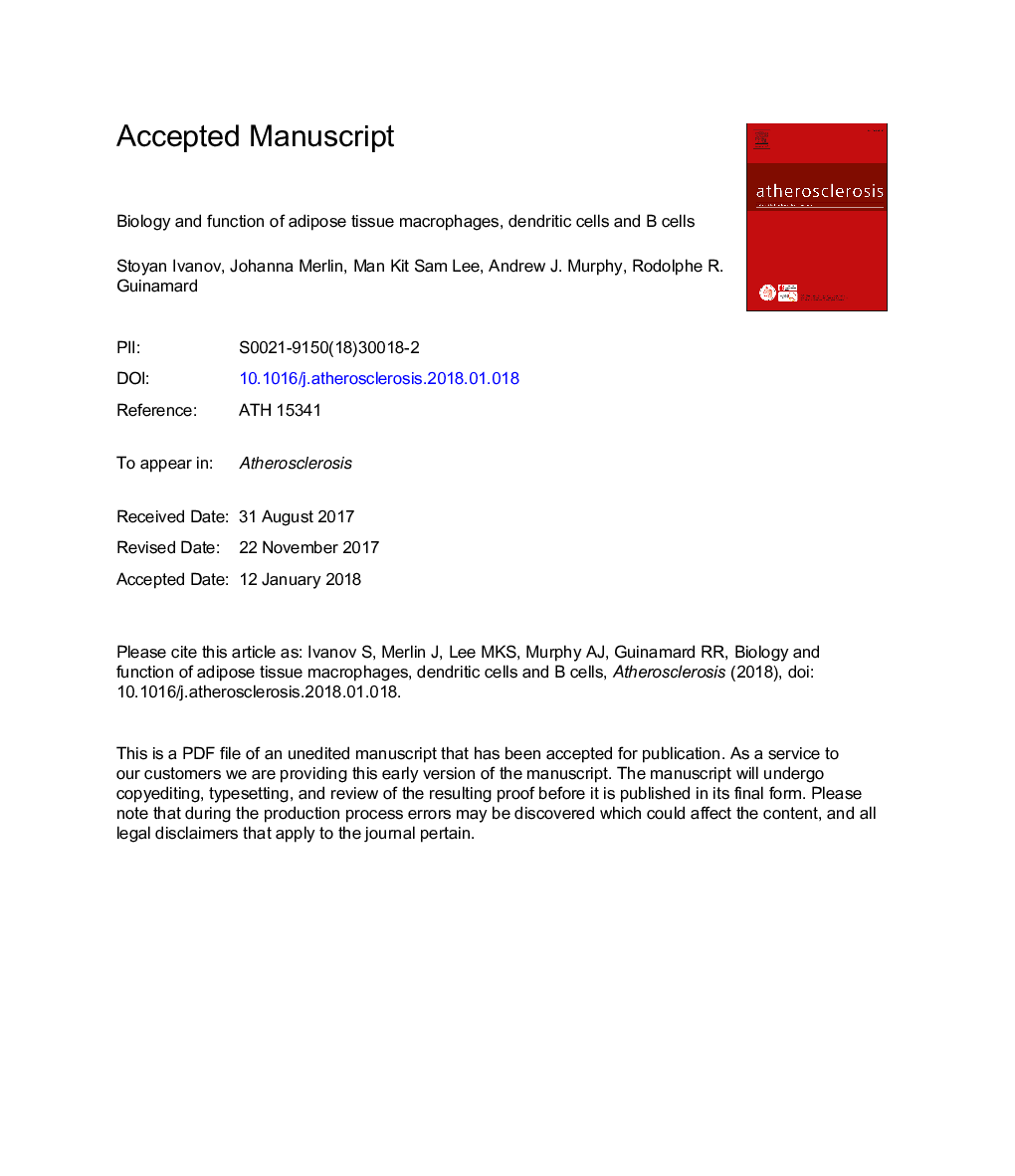| Article ID | Journal | Published Year | Pages | File Type |
|---|---|---|---|---|
| 8656912 | Atherosclerosis | 2018 | 27 Pages |
Abstract
The increasing incidence of obesity and its socio-economical impact is a global health issue due to its associated co-morbidities, namely diabetes and cardiovascular disease [[1], [2], [3], [4], [5]]. Obesity is characterized by an increase in adipose tissue, which promotes the recruitment of immune cells resulting in low-grade inflammation and dysfunctional metabolism. Macrophages are the most abundant immune cells in the adipose tissue of mice and humans. The adipose tissue also contains other myeloid cells (dendritic cells (DC) and neutrophils) and to a lesser extent lymphocyte populations, including T cells, B cells, Natural Killer (NK) and Natural Killer T (NKT) cells. While the majority of studies have linked adipose tissue macrophages (ATM) to the development of low-grade inflammation and co-morbidities associated with obesity, emerging evidence suggests for a role of other immune cells within the adipose tissue that may act in part by supporting macrophage homeostasis. In this review, we summarize the current knowledge of the functions ATMs, DCs and B cells possess during steady-state and obesity.
Related Topics
Health Sciences
Medicine and Dentistry
Cardiology and Cardiovascular Medicine
Authors
Stoyan Ivanov, Johanna Merlin, Man Kit Sam Lee, Andrew J. Murphy, Rodolphe R. Guinamard,
